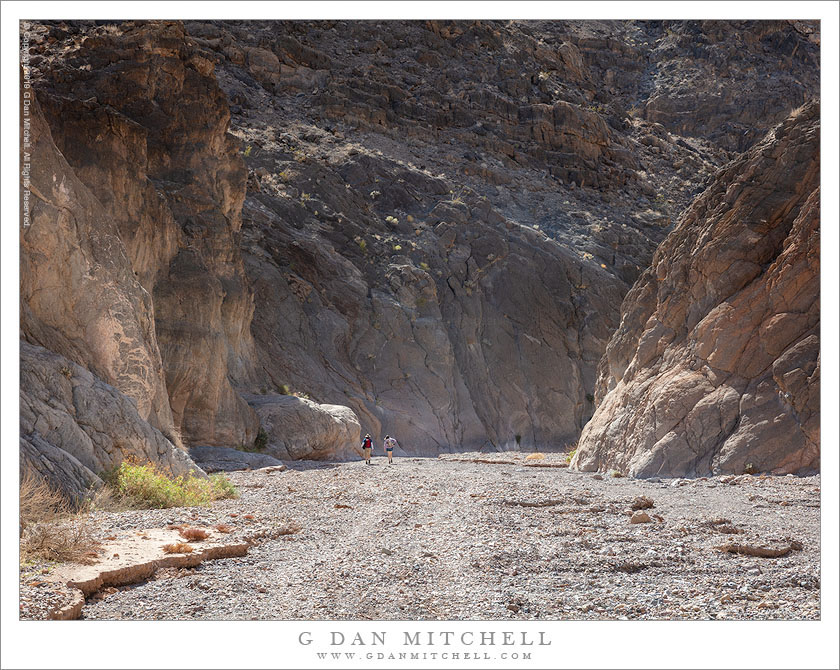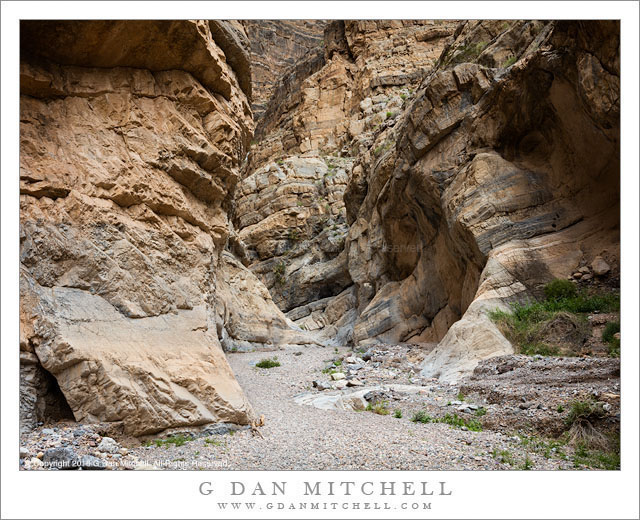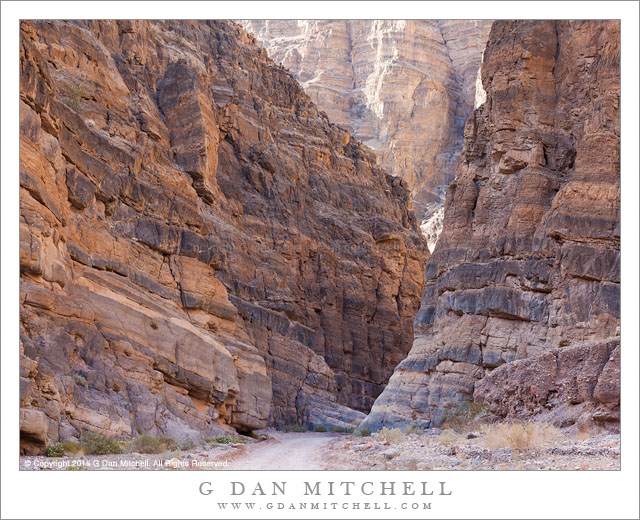
Hikers, Desert Canyon. © Copyright 2019 G Dan Mitchell – all rights reserved.
Two hikers entering the narrows of Titus Canyon.
The stream beds of desert washes often seem to me to be the “freeways” of the desert. They can (but not always!) provide relatively easy walking through rougher terrain. The periodic flow of water, along with the mud and rocks caught in its flow, both clears the washes of vegetation and leaves a relatively flat surface of small stones and dried sediment. Over millennia the water flowing through the washes does the hard word of trail building, wearing down obstructions and leveling out the rough places. (OK, there are exceptions — those chock stones that fall into canyons and block them, along with the periodic “dry falls” that may be unsurmountable.)
This canyon is often used by motor vehicle traffic, but following heavy rains that made the route impassable to vehicles it turned into a much more pleasant place to hike, and a group of us walked up through the spectacular narrows in its lower reaches. Lower in the canyon it is sometimes quite narrow, though in this location it begins to broaden a bit. To understand the scale of the terrain look closely and you’ll be able to spot a couple of hikers.
G Dan Mitchell is a California photographer and visual opportunist. His book, “California’s Fall Color: A Photographer’s Guide to Autumn in the Sierra” is available from Heyday Books and Amazon.
Blog | About | Flickr | Facebook | Email
Links to Articles, Sales and Licensing, my Sierra Nevada Fall Color book, Contact Information.
All media © Copyright G Dan Mitchell and others as indicated. Any use requires advance permission from G Dan Mitchell.




